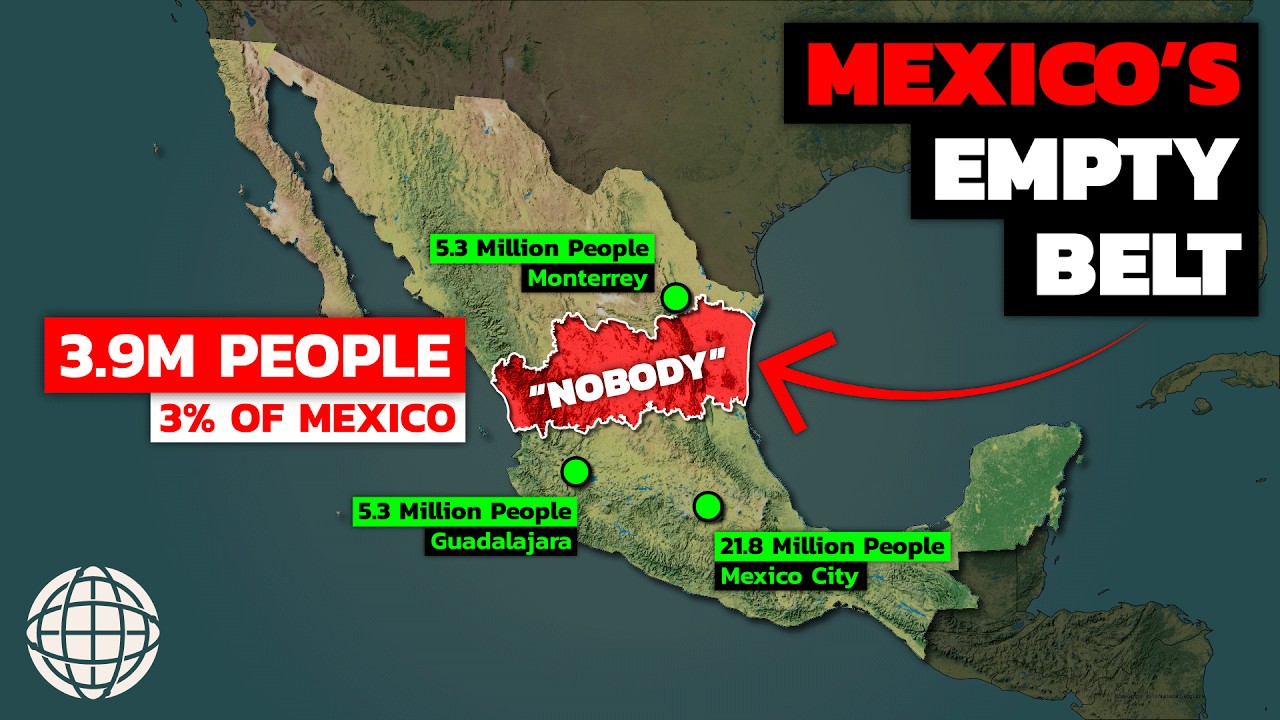Mexico, despite being the 10th largest country in the world by population with nearly 130 million residents, showcases an intriguing demographic anomaly: a vast region known as the “empty belt” where only about 3.9 million people reside. This article delves into the historical, geographic, and economic factors that have shaped this sparsely populated area, revealing a complex interplay that has deterred population growth and settlement.
What is Mexico’s Empty Belt?
The term “empty belt” refers to a sizable area in northern-central Mexico stretching from the eastern to the western coastline. This region is characterized by low population density, where only 3% of the country’s inhabitants choose to reside. The reasons for this sparse settlement are rooted in a combination of historical, geographic, and economic challenges.
Historical Context
Pre-Colonial and Colonial Influences
Before the arrival of the Spanish in the 16th century, this region was inhabited by diverse indigenous tribes. The most notable civilization was the Aztecs, which boasted a vibrant society and complex urban structures. However, upon the Spanish conquest began in 1519, the focus quickly shifted away from the northern regions due to their harsh environments and less fertile soils. The Spanish prioritized colonization in the agriculturally rich central and southern regions of Mexico, where they could cultivate profitable crops such as sugar and coffee.
Independence and Beyond
This pattern continued post-independence, as the northern territories remained underdeveloped compared to their southern counterparts. The struggle for independence from Spain during the early 1800s, sparked by figures like Miguel Hidalgo, further complicated the development of these northern areas. Their isolation and the ongoing conflicts made them less appealing for settlement and economic investment.
Geographic Challenges
Arid and Semi-Arid Conditions
The empty belt encompasses arid landscapes, including deserts and scrublands, which receive minimal rainfall and experience extreme temperatures. Agriculture, heavily reliant on irrigation in these areas, struggles due to less fertile soils, which limits the region’s ability to sustain large populations.
Rugged Terrain
Further complicating matters is the challenging topography marked by high plateaus and mountain ranges such as the Sierra Madre. These geographical barriers inhibit easy construction of necessary infrastructure to support thriving communities.
Climate and Biomes
The diverse climates across Mexico from rainforests to deserts create varying conditions that also influence where populations can thrive. In contrast to the more temperate climate of the central regions, the empty belt’s harsh environmental conditions act as a deterrent to settlement.
Economic Factors
Limited Opportunities
The economic landscape of Mexico’s empty belt is subdued. Although mining and ranching provide some employment possibilities, they do not demand large workforces. This results in limited economic opportunities for local populations, contributing to depopulation as individuals seek better prospects in urbanized areas.
Violence and Security Concerns
Moreover, the persistent threat of violence from drug cartels exacerbates this issue. With limited law enforcement presence in sparsely populated areas, the risks discourage migration into these regions, further entrenching their status as an empty belt.
Infrastructure Development
The lack of infrastructure, including roads, healthcare facilities, and educational institutions, reinforces the cycle of underdevelopment. Many communities lack essential services, making it difficult for them to grow and thrive. Consequently, younger generations often move to larger cities where opportunities are more abundant.
Contrasting Population Centers
Urban Development Elsewhere
In stark contrast to the empty belt, urban centers like Mexico City, Monterrey, and Guadalajara continue to flourish, showcasing population densities that highlight the stark divide within the country. For instance, Mexico City boasts around 22 million inhabitants, while successful cities such as Monterrey and Tijuana benefit from their proximity to the U.S. border—attracting economic growth and trade.
The Pull of Proximity to the U.S.
The cities in northern Mexico are significantly shaped by their economic relations with the United States. NAFTA and the USMCA agreements have opened opportunities for trade and manufacturing, allowing cities like Tijuana to thrive as bustling commerce centers. In contrast, the empty belt lacks similar economic ties and opportunities, leaving it underpopulated and economically stagnant.
Conclusion
The concept of Mexico’s empty belt illustrates a complex web of historical neglect, challenging geography, and economic limitations that contribute to a lack of population in this vast region. While northern cities have benefitted from their geographic position and economic integration with the United States, the empty belt remains a poignant reminder of regional disparities driven by various factors.
Take Action
If you found this exploration of Mexico’s empty belt intriguing and want to learn more about geography and related subjects, consider subscribing to our channel for more in-depth discussions and videos. Geography holds the key to understanding not just our world—but also the trends and challenges we face within it. Join us on this journey!

